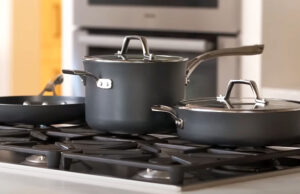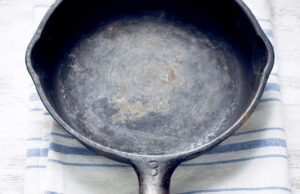As an Amazon Associate, I earn from qualifying purchases at no extra cost to you.
How to Use Whirlpool Dishwasher: (Expert Ultimate Guide)
Sometimes, after a long day of cooking, staring at a sink full of dirty dishes feels overwhelming. You reach for your Whirlpool dishwasher but wonder if you’re really using it correctly. Could it be cleaner, faster, or more efficient? I had the same problem until I discovered some simple tricks. It’s fascinating how small adjustments can completely change your dishwashing routine. Let’s dive in and make your dishwasher work like a charm.
Key Takeaways: To use a Whirlpool dishwasher effectively, start by loading dishes correctly, keeping space for water to circulate. Add detergent and rinse aid as needed, checking measurements carefully. Choose the proper cycle based on dirt level and dish type. Run the machine without overfilling, and occasionally clean filters and spray arms. Allow dishes to cool slightly before unloading, starting with the bottom rack to prevent drips.
Loading Dishes Correctly for Best Results
Proper loading can feel like a puzzle at first, but it makes a huge difference. Plates should face the center, with bowls angled slightly downward so water hits every surface. I used to stack plates too closely, and the food didn’t come off. Now, leaving a little breathing room ensures better cleaning.
Pots and pans go on the bottom rack because it’s sturdier and closer to the main spray. I remember trying to place a large pan on top—it barely got clean. So, keep heavier items low and lighter, delicate dishes up top. Plastic items should always be on the top to prevent warping from heat.
Utensils need some thought too. Mixing forks and knives in one basket often leads to clumps and missed spots. Separating handles and placing spoons alternately helps water reach every corner. I even have a small trick: knives should point down for safety and better cleaning.
Sometimes, little items like lids or measuring cups slip through cracks. I keep a mesh container for small things to prevent them from moving around. Observing how dishes settle and adjusting them slightly can make the wash spotless.
- Plates face inward; bowls angled downward
- Heavy items on bottom, delicate on top
- Utensils separated and mixed handles
- Small items secured in mesh container
Choosing the Right Cycle for Your Needs
Whirlpool dishwashers come with multiple cycles, which can be confusing at first. I used to pick “Normal” every time, but now I match the cycle to the mess. Heavy pots need the “Pots & Pans” cycle, while lightly used glasses are fine with “Light Wash.” This ensures energy isn’t wasted.
Sometimes, a half-load is enough. I once ran a full cycle for just a few dishes—it felt wasteful. Whirlpool dishwashers have a “1-hour” or “Quick Wash” option, which saves water and electricity. It’s perfect when you don’t have a mountain of dishes waiting.
Temperature matters too. Some cycles use hotter water for grease, while delicate cycles stay cooler to prevent cracking. I always check the recommended temperature for glassware or plastic to avoid surprises. A little awareness keeps items safe.
Finally, remember that extra rinse options can help. I’ve had times when a sticky sauce wouldn’t rinse completely. Using the “Extra Rinse” cycle once in a while prevents residue. It’s a small addition but makes a huge difference.
- Match cycle to dish type and dirtiness
- Use half-load or quick wash for few dishes
- Check temperature settings for safety
- Extra rinse helps remove stubborn residue
Adding Detergent and Rinse Aid Properly
Detergent and rinse aid seem simple, but the amount really matters. I once added too much detergent, and my dishes came out cloudy. Now, I follow the measurement line on the dispenser carefully. A little goes a long way, and too much can leave residue.
Rinse aid improves drying and prevents spots, especially on glassware. I fill it regularly and notice a huge difference. I once skipped it for a week, and water marks appeared everywhere. It’s a tiny step that saves a lot of post-wash wiping.
Choosing between powder, gel, or pods can be tricky. Pods are convenient but sometimes don’t dissolve fully in short cycles. I personally use powder for heavier loads and pods for lighter washes. This way, I get optimal results without fuss.
Some Whirlpool models have detergent indicators—pay attention to them. They tell you if you’re running low and need a refill. I keep an extra box nearby to avoid interruptions during busy cooking days. Small habits like this keep everything smooth.
- Measure detergent carefully, avoid overuse
- Keep rinse aid full to prevent spots
- Choose powder, gel, or pods based on load
- Watch indicators to refill in time
Maintaining Your Whirlpool Dishwasher
Maintenance is often overlooked but is essential for lasting performance. I clean the filter every couple of weeks because leftover food can clog it. A clogged filter reduces water pressure and leaves dishes dirty. It’s a simple task that saves frustration.
Spray arms can get blocked with tiny debris. I remove and rinse them under running water occasionally. One time, a stubborn piece of pasta stopped the bottom arm from spinning. Fixing it was quick but taught me to check regularly.
Door seals also need care. Wiping them with a damp cloth prevents mold and keeps the dishwasher airtight. I noticed leaks disappear after a few weeks of regular cleaning. Plus, it keeps smells away.
Running a monthly cleaning cycle with vinegar or a dishwasher cleaner keeps the inside sparkling. I add it before a “Pots & Pans” cycle and it clears buildup. Simple, preventive steps make every wash more effective.
- Clean filters every few weeks
- Rinse spray arms to prevent blockage
- Wipe door seals to avoid mold and leaks
- Use a monthly cleaning cycle for buildup
Loading Tips for Maximum Space and Efficiency
It’s tempting to pile dishes randomly, but careful arrangement saves space and improves cleaning. I used to cram items in, and the dishwasher couldn’t reach all surfaces. Now, I align plates, stack bowls strategically, and fill gaps with cups.
Large pans can take over the bottom rack, so I place them along the sides. One evening, I realized leaving the middle empty let water circulate better. Little changes like this improved cleaning dramatically.
Glasses are delicate, so spacing matters. I tilt them slightly so water drains off instead of pooling. I once learned the hard way when a cup filled with water at the top didn’t dry. Now, I always tilt and give breathing room.
Utensils have their own strategy. I mix forks and spoons for separation but keep knives pointing down for safety. Small lids go in the top rack or a mesh basket. Observing how items fit ensures full loads without compromising cleanliness.
- Arrange dishes with breathing room
- Place large items on sides for circulation
- Tilt glasses to drain water
- Secure small items in mesh or top rack
Unloading Dishes Safely and Efficiently
Unloading may seem simple, but order matters. I start with the bottom rack to avoid drips from top items. One day, I flipped the order and ended up with wet spots everywhere. Starting low prevents that mess.
Wait a few minutes before unloading. Hot steam can burn, and dishes are fragile right after a cycle. I usually wait five minutes while grabbing a cup of coffee—it’s a nice little pause. Patience keeps dishes safe and intact.
Check each item as you remove it. Occasionally, a dish isn’t completely clean, especially near the edges. I rinse or rewash immediately instead of letting it sit. This prevents future stains and frustration.
Stack dishes carefully in cupboards. Bowls inside bowls, plates together, and glasses spaced slightly. I noticed this arrangement reduces the chance of chipping and saves space. A little attention goes a long way.
- Unload bottom rack first to avoid drips
- Wait a few minutes for cooling
- Check for missed spots and rinse if needed
- Stack dishes carefully to prevent damage
Final Thoughts
Using a Whirlpool dishwasher efficiently comes down to small, thoughtful habits. Proper loading, cycle selection, and regular maintenance make every wash effective. Paying attention to detergent, rinse aid, and placement ensures dishes come out sparkling. These routines save time, water, and energy while keeping your kitchen stress-free. Little tweaks, tiny habits, and awareness transform dishwashing from a chore into a smooth, effortless task.
| Task | Tip/Recommendation | Extra Note |
|---|---|---|
| Loading plates | Face inward, bowls angled down | Avoid overcrowding |
| Pots and pans | Place on bottom rack | Heavier items only |
| Glassware | Top rack, slightly tilted | Prevent water pooling |
| Utensils | Mix handles, knives down | Small baskets for lids |
| Detergent use | Follow dispenser lines | Avoid overfilling |
| Rinse aid | Keep full | Prevent spots on glassware |
| Filter cleaning | Every 2 weeks | Remove debris for better pressure |
| Spray arms | Rinse occasionally | Prevent clogs |
Frequently Asked Questions (FAQs)
Is it necessary to use rinse aid every time?
Yes, using rinse aid consistently improves drying and prevents water spots, especially on glassware. Even a short cycle can leave marks without it. I noticed the difference when I skipped it for a week—cups and glasses had streaks. For heavy loads with lots of glass, filling the rinse aid compartment ensures every dish dries evenly. It’s a small habit that saves time wiping and keeps dishes sparkling.
Can I use any type of detergent in a Whirlpool dishwasher?
You can use powder, gel, or pods, but not all work equally well. Pods are convenient but may not dissolve completely in short cycles. I switch to powder for heavily soiled loads and pods for lighter dishes. Following the recommended amount is key because too much detergent can leave residue, and too little leaves dishes dirty. Always check your dishwasher manual for the best choice.
Do I need to clean the filter regularly?
Yes, cleaning the filter every couple of weeks is essential. Food debris can clog it, reducing water pressure and cleaning efficiency. I once ignored it, and dishes came out grimy. Removing and rinsing it under water keeps water flowing freely and ensures spotless dishes. Regular maintenance also extends your dishwasher’s life.
Is it okay to overload my Whirlpool dishwasher?
Overloading is not recommended because it blocks water circulation. I learned this the hard way when plates on the bottom didn’t get clean. Leave enough space between items, especially bowls and glasses, so water reaches every surface. Small adjustments make a big difference in cleaning quality.
Can I wash delicate glassware safely?
Yes, but placement and cycle choice are crucial. Place glasses on the top rack, slightly tilted, and use a delicate or light cycle. I once put a thin glass on the bottom—it cracked from heat. Rinse aid also helps prevent water spots, keeping glassware shiny. Taking these small precautions protects fragile items.
Do I need to run a monthly cleaning cycle?
Running a monthly cleaning cycle helps remove buildup inside the dishwasher. I use vinegar or a dishwasher cleaner on “Pots & Pans” or “Heavy” cycle. This prevents odors, clogs, and keeps spray arms free. Regular cleaning ensures better performance and extends your dishwasher’s life.
Is it safe to put plastic items on the bottom rack?
No, plastic can warp due to heat exposure. Always place plastics on the top rack, away from the heating element. I learned this when a container deformed on the bottom. Using the top rack prevents warping and keeps items safe.
Can I use the quick wash for heavily soiled dishes?
Quick wash is ideal for lightly soiled items, not heavy grease. I tried it once on pots with stuck-on food—it wasn’t clean. For dirty dishes, use “Pots & Pans” or “Heavy” cycles. Quick wash saves time, but matching the cycle to dirtiness ensures optimal results.




